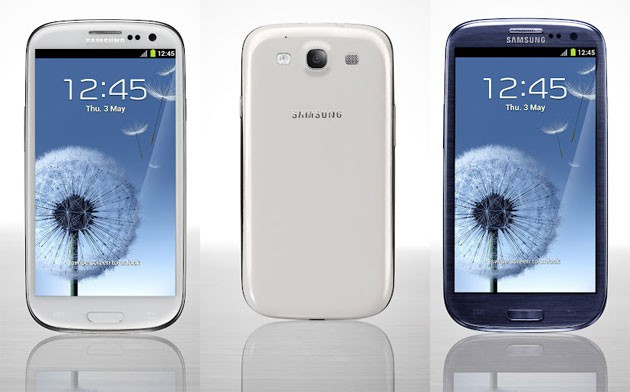Samsung Galaxy S3 Vs HTC Inspire 4G: Battle of 4G Champions
- HTC Inspire 4G Takes on Galaxy S3 in the Battle of 4G Champions

The release of HTC's Inspire 4G at the 2011 Consumer Electronics Show (CES) marked the debut of AT&T's LTE network. Since then, the 4G wars have seen a number of high-profile manufacturers and high-end smartphones enter the fray.
The HTC Inspire operates on AT&T's HSPA+ network (now known as 4G), which, according to the carrier, provides data speeds up to four times faster than its 3G counterpart. However, existing 4G infrastructure around the world is unlikely to deliver at such speeds, for the moment anyway. In any case, the phone has the HTC Sense UI and attractive features like hot-spot capabilities, Dolby Mobile and SRS Sound Enhancement.
Samsung's Galaxy S3 is easily the most awaited smartphone of the year so far and there are only five days to go before the UK market release. The phone holds, for now, pole position, accounting for more than 40 percent of sales for Android smartphones and should roll out across 290 carriers and 145 countries. The company is expected to churn out nearly five million smartphones a month.
Check out how the two smartphones stack up against each other:
Display
The Galaxy S3 flaunts a monstrous 4.8in Super AMOLED display with a capacitive touchscreen running at 720p (720x1280 pixels) resolution and a pixel density of 306 pixels per inch (ppi). By comparison, the Inspire 4G features a Super LCD display with a capacitive touchscreen, supporting a resolution of 480x800 pixels at a pixel density of 256ppi.
The S3 and the Inspire 4G both come with damage resistant Corning Gorilla Glass protection for their displays.
Dimensions and Weight
The S3 measures 136.6x70.6x8.6mm and weighs 133g. The Inspire 4G, on the other hand, measures 122.9x68.1x11.7mm and is heavier at 163.9g.
Processor
The S3 boasts a powerful quad-core 1.4 GHz Cortex-A9 processor based on the Exynos 4 quad chipset and a Mali-400MP GPU for graphics tasks, which is suitable for high-performance computing like gaming and multi-tasking.
The Inspire 4G ports a less-powerful 1GHz Scorpion processor coupled with an Adreno 205 GPU. The processor is based on the Qualcomm MSM8255 chipset with well-balanced power-saving features.
Memory and Storage
The Galaxy S3 ships with 1GB of RAM and also supports three versions of internal storage 16/32/64 GB. The Inspire 4G, on the other hand, supports only 4GB of internal storage model and adds 768 MB of RAM. The S3 offers microSD expansion support up to 64GB, while Inspire 4G supports only up to 32GB microSD. The Inspire 4G, however, bundles with an 8GB microSD card, which is a big plus over the S3.
Operating System
The Inspire 4G comes pre-installed with Android 2.2 (Froyo) onboard, which is upgradeable to Android 2.3 (Gingerbread). In comparison, the Galaxy S3 ships with latest version of Android 4.0.4 (the latest version of Ice Cream Sandwich) factory-installed.
Camera
Both the S3 and the Inspire 4G flaunt powerful eight megapixel rear cameras with common features such as auto-focus, face detection and geo-tagging. The S3 ports 1080p video recording capability at 30fps (frames per second) and also features a decent 1.9 megapixel front-facing camera for video calls; the latter supports 720p video recording at 30fps. The S3 camera also supports special functions such as simultaneous HD video and image recording, touch focus and image stabilisation. In contrast, the HTC smartphone supports only 720p video recording capability at 30fps on its primary camera. It does not offer a secondary, front-facing camera for video calls, which is a major setback.
Connectivity
The Galaxy S3 offers Wi-Fi 802.11 a/b/g/n, DLNA, Wi-Fi Direct, Wi-Fi hotspot, Bluetooth v4.0 with A2DP, EDR and NFC (Near Field Communication). Its 4G connectivity speeds are HSDPA, 21Mbps and HSUPA, 5.76Mbps.
The Inspire 4G also comes with similar connectivity options like Wi-Fi 802.11 a/b/g/n, DLNA, Wi-Fi Direct, Wi-Fi hotspot, Bluetooth v2.1 with A2DP, EDR. The only exception is the lack of NFC. Its 3G connectivity speeds are HSDPA, 14.4Mbps and HSUPA, 5.76Mbps.
Battery
The Galaxy S3 is powered by a massive 2100mAh Li-Ion battery that is rated to deliver up to 590 hours of standby time on 2G and up to 790 hours on 3G. The battery also delivers an impressive talk time of approximately 22 hours on 2G and 12 hours on 3G.
The Inspire 4G, in comparison, features a weaker Li-Ion 1230 mAh battery rated to provide up to 372 hours of standby time and up to 6 hours of talk time.
© Copyright IBTimes 2025. All rights reserved.





















